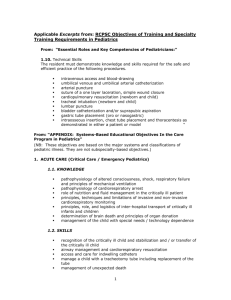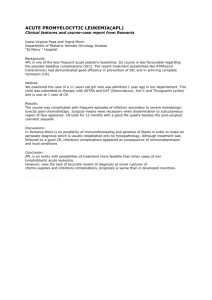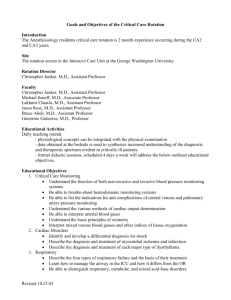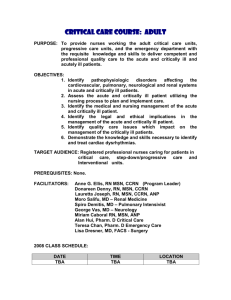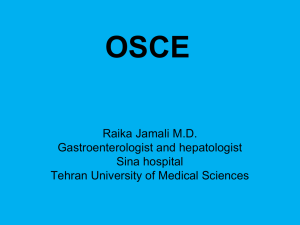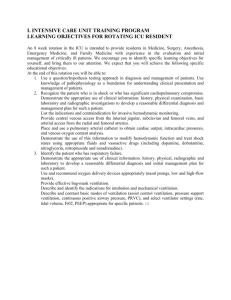Section A - Joint Faculty of Intensive Care Medicine
advertisement
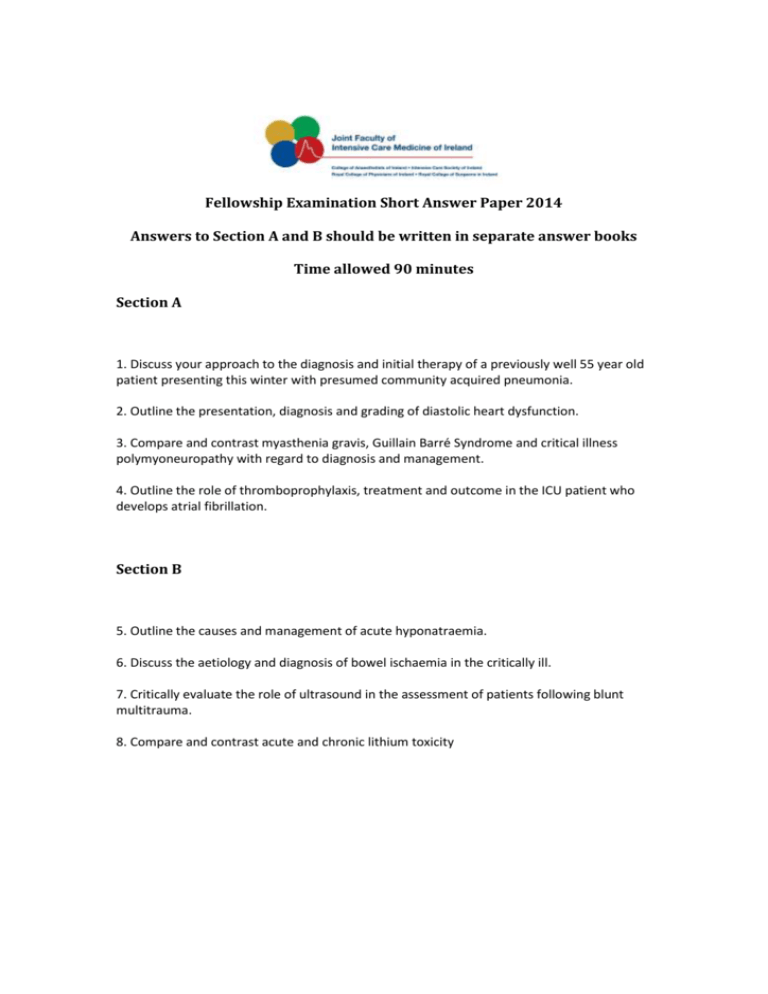
Fellowship Examination Short Answer Paper 2014 Answers to Section A and B should be written in separate answer books Time allowed 90 minutes Section A 1. Discuss your approach to the diagnosis and initial therapy of a previously well 55 year old patient presenting this winter with presumed community acquired pneumonia. 2. Outline the presentation, diagnosis and grading of diastolic heart dysfunction. 3. Compare and contrast myasthenia gravis, Guillain Barré Syndrome and critical illness polymyoneuropathy with regard to diagnosis and management. 4. Outline the role of thromboprophylaxis, treatment and outcome in the ICU patient who develops atrial fibrillation. Section B 5. Outline the causes and management of acute hyponatraemia. 6. Discuss the aetiology and diagnosis of bowel ischaemia in the critically ill. 7. Critically evaluate the role of ultrasound in the assessment of patients following blunt multitrauma. 8. Compare and contrast acute and chronic lithium toxicity Fellowship Examination Short Answer Paper 2013 Answers to Section A and B should be written in separate answer books Time allowed 90 minutes Section A 1. Outline the initial assessment, and the early complications (first 2 weeks post injury) of a C6 complete traumatic spinal cord injury. 2. Write short notes on: a) Cyanide toxicity b) Vasopressin - patient selection, therapeutic indications and complications. 3.Define pulmonary hypertension and describe your initial assessment and management of a patient with known pulmonary hypertension who presents with an acute lower respiratory tract infection now requiring intubation, mechanical ventilation and cardiovascular optimisation.(where an investigation is requested, please define rationale). 4. Outline causes and management of persistent filter clotting on CRRT circuit. Section B 5. Discuss the therapeutic options for the management of a septic patient with an intraabdominal collection post small bowel resection for adhesions with primary anastomosis. Include in your answer your approach to antimicrobial therapy and to feeding this patient. 6. Discuss the approach and current evidence for a) Protective lung ventilation b) HFOV c) Prone Positioning d) Inhaled pulmonary vasodilators 7. Outline the principles of management of diabetic ketoacidosis. (adult patient presents generally unwell, awake, thirsty, BP 80/60 HR 110/min, blood glucose 42 mmol/L, serum sodium 132 mmol/L and pH 6.99). 8. Outline the ethical arguments pertaining to research in incompetent adults (eg. critically ill patients). END OF THIS PAPER Diploma of the Irish Board of Intensive Care Medicine Short Answer Paper 2012 Time allowed 90 mins Section A 1. Write brief notes on the presentation, diagnosis, microbiology and treatment of necrotizing soft tissue infections (NSTIs). 2. Define the osmolar gap and list the causes of a raised osmolar gap. Using an example of your choice, describe the management of a raised osmolar gap. 3. Write short notes on the indications, proposed mechanisms of action, and the complications of intra-aortic balloon pump counterpulsation. 4. How would you differentiate acute RV myocardial infarct from acute PE in a ventilated ICU patient? If a PE is diagnosed, outline your approach to management including the indication for thrombolysis. Section B 5. Describe clinical assessment and monitoring of patients being weaned from ventilation. 6. Discuss the current management of acute stroke and its critical care implications. 7. Write short notes on the definition, advantages and disadvantages of clinical information systems 8. Write short notes on early enteral nutrition and prophylactic antibiotic therapy in the management of severe acute pancreatitis. THE JOINT FACULTY OF INTENSIVE CARE MEDICINE OF IRELAND Diploma of the Irish Board of Intensive Care Medicine Short Answer Paper 2011 Time allowed 90 mins Section A Write short notes on 1. The elements of the first 6hour surviving sepsis campaign care bundle and discuss their relative merits. 2. The assessment and relevance of fluid responsiveness in the critically ill. Outline the end-points of fluid resuscitation. 3. Your approach to high frequency oscillation ventilation (HFOV). Outline the indications, patient selection / exclusion, assessment of efficacy and complications. 4. The early recognition of acute kidney injury (AKI). Include the role of biomarkers. Section B Write short notes on 5. Causes, diagnosis and management of delirium in Critical Care 6. The management of severe variceal bleeding in a cirrhotic patient including the role of trans internal jugular porto-systemic shunting (TIPS) 7. Categories of antifungal agents used in the management of the critically ill and summarise their relative merits. 8. The diagnosis of catheter related infection (CRI) and the relevance of CRI to quality improvement (QI) in a critical care service. Diploma of the Irish Board of Intensive Care Medicine Short Answer Paper 2010 Time allowed 90 mins Section A Write short notes on 1. Diagnosis, management, and complications of carbon monoxide poisoning 2. H1N1 infection; include in your answer detail of the associated acute lung injury / adult respiratory distress syndrome pattern 3. In the light of current evidence, how would you write and implement a glycaemic control protocol in your ICU. 4. The haemodynamic support of the organ donor patient in ICU. Include in your answer (the current recommendations on) the role of vasopressin and ‘hormone cocktail’ therapy. Section B Write short notes on 5. Intensity of continuous renal replacement therapy – include in your answer reference to dialysis prescription and efficacy. 6. Diastolic heart dysfunction in the Critical Care patient. 7. Prevalence and importance of antimicrobial prescribing in Critical Care. Include in your answer the key components of an antimicrobial stewardship programme. 8. Heparin induced thrombocytopaenia
